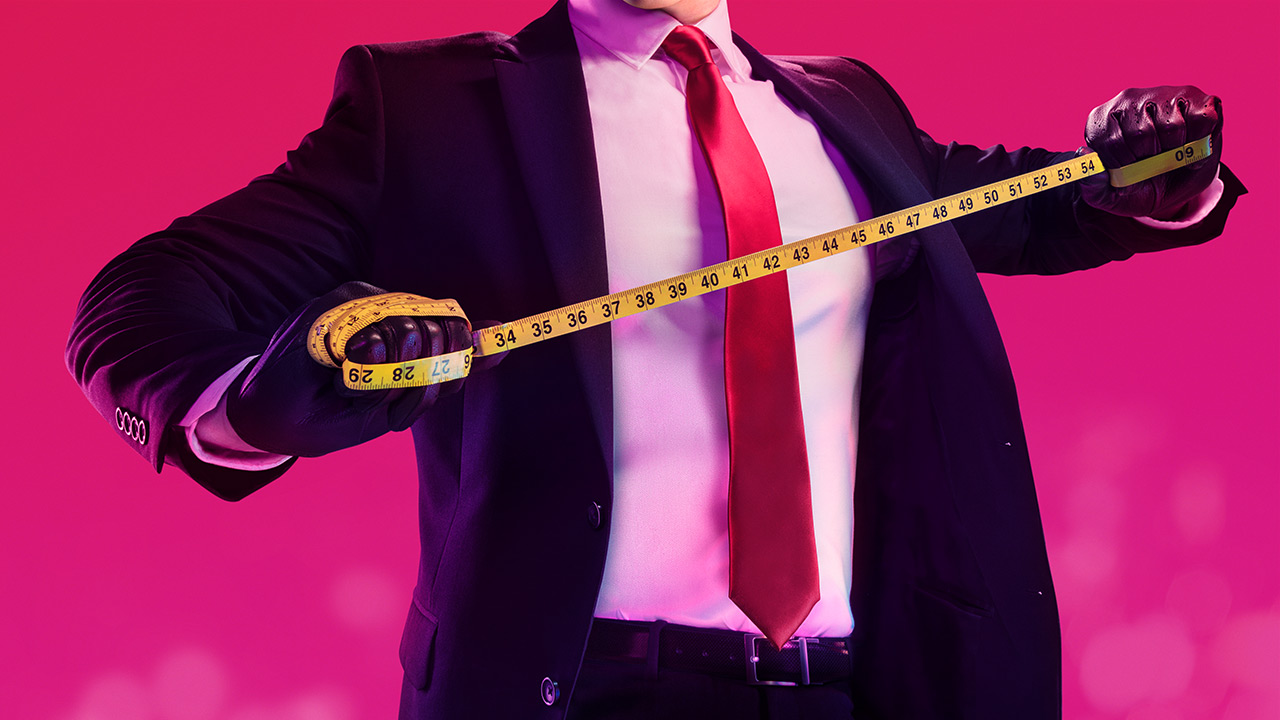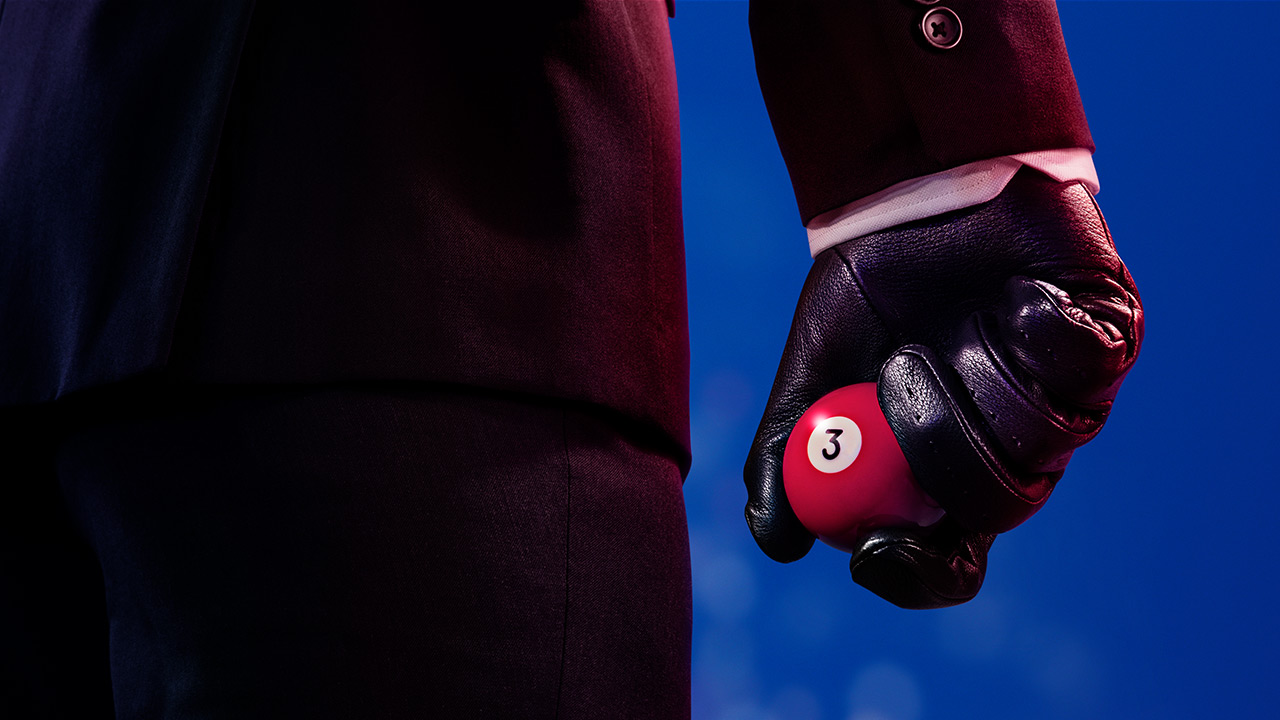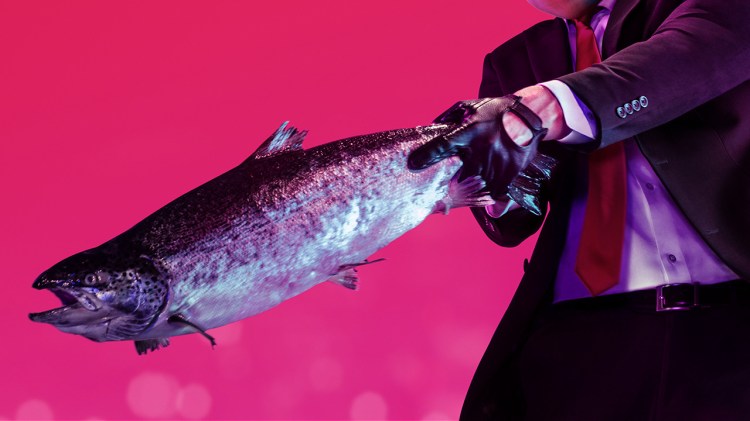The 2016 reboot of Hitman was one of my favorite games in a strong 2016, and I’m excited to get back into that world of pure assassination. But from the first trailer for Hitman 2, I wasn’t sure if it would feel like a full sequel as opposed to a second season of the same game when it launches November 13 for PC and consoles. After playing it, however, I noticed some significant improvements that returning fans and new players will appreciate and won’t want to go without in the future.
The two biggest changes are the crowd technology and the picture-in-picture info bubbles. I spoke to Hitman 2 director Jacob Mikkelsen at E3 about these aspects of the game, and he explained that it was all about refining a game that so many people already love.
“This time around it was [about[ taking all that knowledge [from making Hitman games] and doing it again, but better this time,” said Mikkelsen. “The stuff you see in Miami, that’s the biggest crowd we’ve ever done. It allows us to look at the feature set and say, where do we want to take steps forward? This time we added crowd gameplay … where you get to hide in the crowd from the enforcers.”
I played through the new Miami level at the Electronic Entertainment Expo trade show in Los Angeles last week, and the mission I was on guided me into a part of the map where I could have hidden among the ground to break line of sight with the security agents that knew 47 is not a mechanic for the target’s racing team. But I was so trained from Hitman 2016, that I didn’t even attempt it even though I thought it was possible. So I asked Mikkelsen, and he confirmed that is how it works.
June 5th: The AI Audit in NYC
Join us next week in NYC to engage with top executive leaders, delving into strategies for auditing AI models to ensure fairness, optimal performance, and ethical compliance across diverse organizations. Secure your attendance for this exclusive invite-only event.
“The cool thing about it is that if you get in trouble in other places, you can dip into the crowd and then they’ll try to find you,” he said. “It becomes this cat and mouse game in the crowd.”
As for the picture-in-picture, this is a new way for developer IO Interactive to give players an understanding of what is happening in the level. For example, if you walk in front of a camera, you will see what the camera sees so you understand if you need to delete the footage. If a key nonplayer character does something significant in another part of the map, the game may also pop up with a PIP screen that shows you that is happening. Mikkelsen says that the team wants to balance between giving players the data they need and avoiding overwhelming them with useful noise.
“You can only take in so much information,” he said. “When we built the levels, we’re very aware of how it flows when you’re moving through them. There’s always this risk that we’ve just put way too much stuff in one place at once.”
In the end, though, IO is leaning toward giving players as much info as they can handle.
“We have many different ways of communicating with the players,” said Mikkelsen. “We have Diana. We have the picture in picture. We have the characters who talk to you about something, or when you’re eavesdropping. Of course there’s a layer of UI on top that also communicates on the mini-map. We have many different channels of communication going at the same time – music and audio cues as well.”
And by surfacing all of that information, it frees up players to experiment more. Or, more importantly, to find the fish to use as the weapon in my perfect murder.
Here’s my full interview with Hitman 2 director Jacob Mikkelsen.
GamesBeat: I played Hitman 2. I really liked it. It’s more Hitman, but can you tell me what your mission was with this game, or with this season?
Jacob Mikkelsen: First of all, this time around it’s not a season. It’s kind of all the main locations at once, and you can go at it at your own pace. Then there’s the live content that delivers lots of challenges. We have the escalation contracts coming back. Contracts mode is still in play, and the elusive targets, the one shot targets. You have the weekend and if you fail, you miss it. All that is back. But this time around, we had built a lot of knowledge about how we can make these big levels and make these complex level designs with all the layers of trespassing and stuff. This time around it was taking all that knowledge and doing it again, but better this time. The stuff you see in Miami, that’s the biggest crowd we’ve ever done. It allows us to look at the feature set and say, where do we want to take steps forward? This time we added crowd gameplay, as you probably saw in your playthrough, where you get to hide in the crowd from the enforcers.
GamesBeat: I was wondering about that specifically. I was avoiding direct line of sight using the crowd?
Jacob Mikkelsen: Precisely. But the cool thing about it is that if you get in trouble in other places, you can dip into the crowd and then they’ll try to find you. It becomes this cat and mouse game in the crowd. On top of that, I don’t know if you saw, but the briefcase for the sniper rifle, that’s also in the game. 47 can carry around his rifle in the briefcase, but not just the rifle. We’ve opened it up so you can put anything you want in the briefcase. I think it’s one item currently. If you have illegal stuff that you want to move around without getting noticed, the briefcase is interesting. Also, if you just leave it behind somewhere, someone might find it and pick it up and put it in the lost and found, so you have to retrieve it again. You can also use that as a smuggling mechanic, have get stuff on the inside by proxy. It ties into one of my favorite ways of distracting guards, which is to place a weapon. Oh, that’s not supposed to be there. They pick it up and wander off and for the next 120 seconds he’s going to be busy doing something else, and so I can do my thing.
GamesBeat: I really did appreciate the episodic nature of the previous game. But I get why you would want to have everything all at once. There’s no reason you can’t still do the live stuff like you were mentioning. What’s the emphasis now as far as the live game? What can you do to play around with the weekly updates this time around?
Jacob Mikkelsen: There will be new locations coming later in expansions. On top of that we have the Sniper Assassin mode, which is also a new location. For us, it makes—when we did the previous game, Paris was out there, and then all the updates that followed Paris had to be about Paris. That was the only thing people had. Now it allows us to play around more with the locations, criss-crossing the different challenges and different escalations and elusives, spreading them out. It’s going to feel more varied, both for us and also for the fans when they play it.
GamesBeat: You do think that’s what people want? I felt like when it was just Paris for a while, I was getting really familiar with it. This is actually kind of nice. I don’t feel the need to try other stuff. Is that a risk?
Jacob Mikkelsen: Honestly I think it makes it better, because it becomes more fresh. People will still go into that depth. Season one showed the players what to expect of a Hitman location now. We’re totally delivering on the same depth, and even more so in places. I think this is the best of both worlds.

Above: Agent 47 can kill you with just about anything.
GamesBeat: Do you think you have an audience that already knows what to expect from a Hitman game, and you can dump a bunch of content on them at once?
Jacob Mikkelsen: I would think so, yeah.
GamesBeat: Tell me about some of the other refinements. It seems like there’s a lot of smart little things outside of lost and found and things like that.
Jacob Mikkelsen: Building on something that’s already doing a great job, it’s almost a privilege. The cool thing is, we’ve done a lot of tweaks underneath the hood. Things that weren’t working as well as they could have, we’ve improved that. You saw the picture in picture, which is a great tool. Also, for players to kind of—the game is running even though you’re not there. That’s going to be a great tool for us to tell you, okay, this body has been found, or this camera on Diana feeds in—like the red band you just saw in the playthrough. We’re also going to show major events. In the case of a target doing something special, we can show that with picture in picture. That’s going to be a help. In the previous game there were these moments, if you snuck up behind people in front of a mirror, things like that.
GamesBeat: They pointed that out, that the mirror works two ways now.
Jacob Mikkelsen: The mirror will actually work now, so you can’t stand behind a guy with a knife that way. That was one of the places where, in the previous game, the illusion broke down a bit, when you could do these things. That’s one of the challenges we face when we make a game set in the real world. The amount of effort we need to put into this thing for it to be credible to you is a lot higher than in a sci-fi setting or fantasy setting. In that case the developers can make their own scenes and props and things like that. But a game that’s contemporary, in a real world setting.
GamesBeat: Everyone’s been in a place like this before.
Jacob Mikkelsen: Exactly. Everybody’s been there. But at the same time, what I really like about the Hitman games is the way you get to go backstage. Maybe I’ve seen a fashion show once–
GamesBeat: But you can look back there. I wonder what’s going on. That’s the fantasy.
Jacob Mikkelsen: Exactly right. I think there’s something there. It’s also about—what I really like about the game is that you’re kind of cheating. You’re exploiting these people. I’m just going to sneak back here, and then Bob never comes back from his cigarette break.
GamesBeat: About the picture in picture, it seems like that’s going to give the player a lot more information. Do you find that it’s better to err on that side, as opposed to obscuring what might be happening in the game?
Jacob Mikkelsen: It’s a fine balance. You can only take in so much information. When we built the levels, we’re very aware of how it flows when you’re moving through them. There’s always this risk that we’ve just put way too much stuff in one place at once. We have many different ways of communicating with the players. We have Diana. We have the picture in picture. We have the characters who talk to you about something, or when you’re eavesdropping. Of course there’s a layer of UI on top that also communicates on the mini-map. We have many different channels of communication going at the same time – music and audio cues as well. It’s about balancing all of these impressions out so we don’t overwhelm you. That’s actually quite tricky in a game where you can just run around and do whatever you want.
GamesBeat: And you never know what the player will do next.
Jacob Mikkelsen: Precisely. You’re standing in a completely different part of the map, and then all of a sudden Diana starts talking about something. That’s when we have to go in and—the way we design the game is very—it’s conditionally driven. You and I are having an interview now, and that requires you sitting here and me sitting here. The game works in the same way. When two characters are having—one is chopping onions and the other is going to the back of the kitchen and coming back. When they meet, that’s when they can have a conversation, when both of them are present. 47 may change that, so we need the whole thing to be able to continue even though—if I didn’t show up to this interview you’d get up and go someplace else. You wouldn’t just get stuck here. Deep at its roots, that’s how we think through the entire thing, making sure that it will keep on trucking no matter what. Because literally, to put it bluntly, we have no idea what the player is doing. But that’s also the beauty of this. That’s why it turns into a thing where you as a player can make it your own, instead of a linear experience where everyone is going to get the same explosion and the same car plowing through a wall at the same time. This is very much about giving players the ability to make this their own experience. It’s always fun to hear two Hitman fans meet and discuss a level. They have completely different stories. When that happens, I think we’ve succeeded.

Above: A billiards ball is the skull’s worst enemy.
GamesBeat: Do you have any improvements or new tools in the mission creator for fans? It seems like a lot of people took the last one and added their own layers on top of even the stuff you built into the game.
Jacob Mikkelsen: Right now Contracts mode is trucking along. We’ve done some changes to it throughout the previous game’s life, at the tail end, where we did these trending contracts so it was easier to find the popular once. But for now, it starts where it is right now, and we’ll have to see where we are during the live end.
GamesBeat: A couple months from now, a year from now, do you imagine that it would be possible that you’re still making content or adding stuff to the game that you had no idea about right now? Not just levels, but features, things like that.
Jacob Mikkelsen: The thing is, making a game like this is just—in its own right it’s kind of crazy, because it’s such a beast. As an interesting anecdote from the Miami thing you just played, I don’t know if you noticed, but when you enter the drivers’ lounge, there are these big mirror balls hanging from the ceiling. When we designed these locations, we started out with the idea of race cars. So then we need grandstands, we need paddocks, we need pits, we need a VIP lounge, the emergency area in the back, all that stuff. That kind of explodes in the design from the cars. As we realized these locations, when we began to build them and set them up, all of a sudden there’s this mirror ball hanging here that the graphics artists made. Well, that’s an accident waiting to happen. Can we turn that into an accident? And we did. Now that’s one more way of doing something to someone, which in the case of [name – 12:00], I think it could potentially work. But this is also ammo for the contract creators and the escalation contracts and elusive contracts. It’s about keeping as many doors open as possible. Right now, of course we have ideas for where we want to take the different features and things moving forward. But it’s always something where we look at it and see what players are actually doing with the game. Then we react to that. It’s mix of our own ideas and the reactions we get from the players.
GamesBeat: Last question would be about going independent and then working with WB. How is that going? Are you confident that you have the key metrics you’re going to hit?
Jacob Mikkelsen: The development of this game started right after the previous one. I’m just super happy that we get to continue. Working with Warner is great. It’s working out just fine.
GamesBeat: They have you right up front here. You’re a big deal this year.
Jacob Mikkelsen: It’s been a blast being at E3 and going around and showing the game, having people in there really playing it. We’ve gotten lots of giggles. The fish–
GamesBeat: Oh yeah, when I came out I was like, oh man, I wish I could have found the fish.
Jacob Mikkelsen: To be honest, I think that was—it was one of these things where, oh, we have a fish! At the studio—I actually—how does this sound? [Cracking up laughing] I actually googled a video of two guys slapping each other with a fish, and I thought, okay, awesome, let’s do that.


